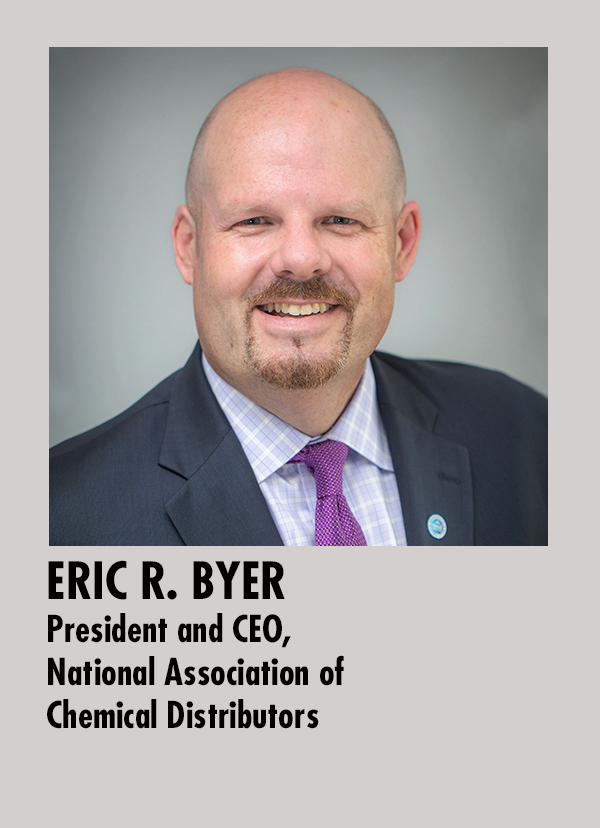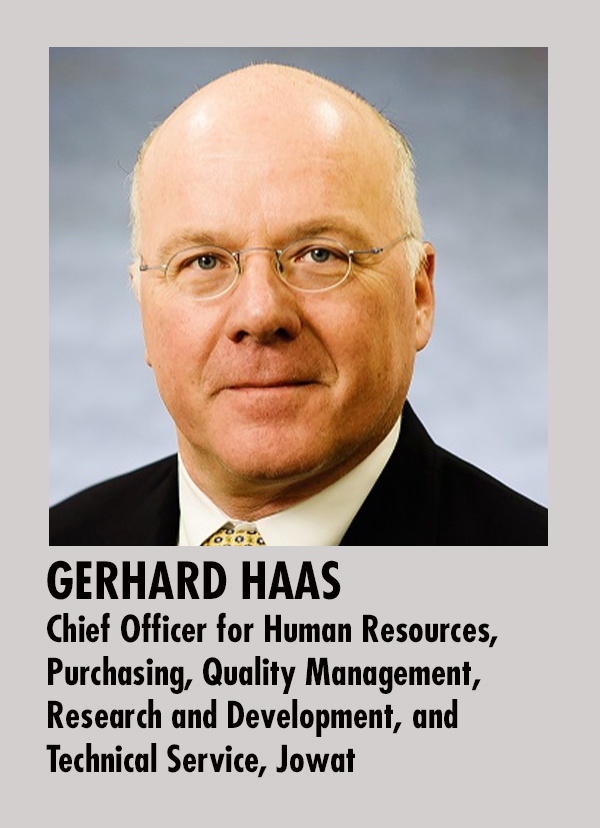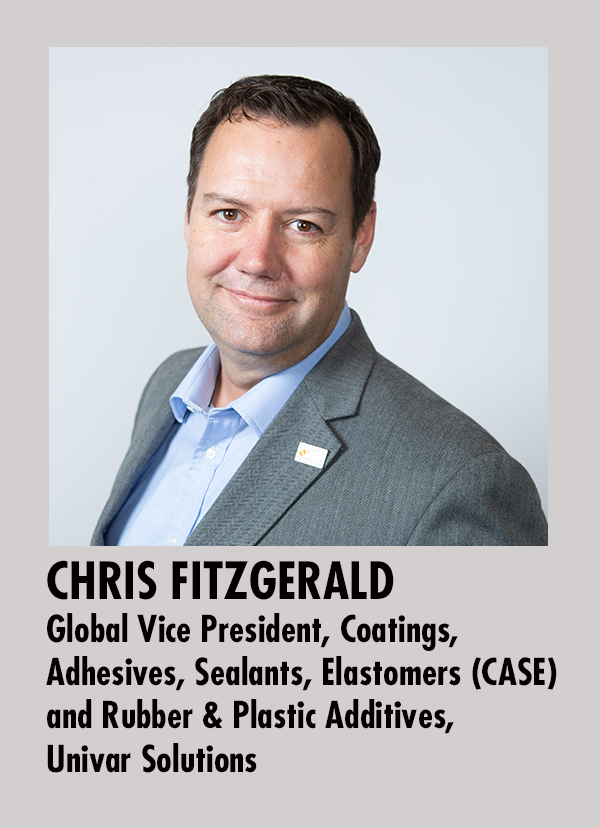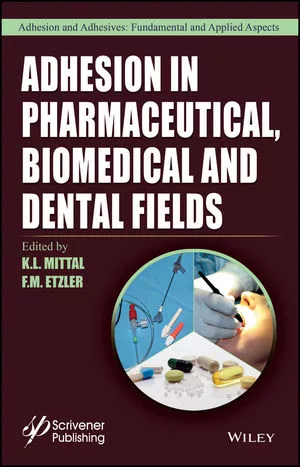Inching Towards Normal: Experts Weigh in on Chemical Supply Chain
ASI recently reached out to several key companies to assess the current state of the supply chain and find out how they are managing challenges and planning for the future.

Bulat Iskhakov / Creatas Video+ / Getty Images Plus via Getty Images.
In the past two and a half years, the supply chain has garnered a lot of attention, both in the general population and within the adhesives and sealants industry. During that time, the supply chain has faced challenges brought on by the unprecedented combination of COVID-19, winter storm Uri in Texas, the backup in the Suez Canal caused by the container ship Ever Given, labor issues within the U.S. rail industry, and disruptions in major U.S. ports. Professionals within the adhesives and sealants industry have successfully addressed these issue, keeping the companies that rely on their products supplied with the materials they need to continue doing business.
I reached out to key players in the industry to find out what issues are still in play and how companies are mitigating the various challenges, as well as their projections for the future.
How have the events of the last three years affected the way your company views logistics?
Eric R. Byer, President and CEO, National Association of Chemical Distributors: The National Association of Chemical Distributors (NACD) represents companies who process, formulate, blend, re-package, warehouse, transport, and market chemical products for over 750,000 industrial customers across the United States. NACD’s chemical distributor members support the adhesives and sealants industry by providing the materials needed to develop the crucial products your industry provides to markets and applications like aerospace, health care, marine, automotive, building and construction, and so many more.
Like so many industries, chemical distribution has had to surmount strong headwinds to continue receiving raw materials and reliably delivering products at prices that ensure NACD member companies can keep their doors open and their workers employed. The perfect storm of labor shortages, pent up demand, weather events, shipping container shortages, sky-high ocean carrier costs, and more showed us just how fragile the supply chain is and underscored just how vital an efficient and effective supply chain is to ensure the movement of the ingredients essential for our health and everyday lives.
 Gerhard Haas, Chief Officer for Human Resources, Purchasing, Quality Management, Research and Development, and Technical Service, Jowat: Oversea, air and domestic land logistics have been challenging especially in the past two years. High demand has caused vessel and container shortages causing not only a significant rise in cost, but also greatly reduced reliability and delays. This situation has caused us to extend delivery time in our MRP systems, increase inventory levels and add staff to our logistics department. All these factors have also resulted in a review in which region materials are sourced to mitigate the impact of those drivers.
Gerhard Haas, Chief Officer for Human Resources, Purchasing, Quality Management, Research and Development, and Technical Service, Jowat: Oversea, air and domestic land logistics have been challenging especially in the past two years. High demand has caused vessel and container shortages causing not only a significant rise in cost, but also greatly reduced reliability and delays. This situation has caused us to extend delivery time in our MRP systems, increase inventory levels and add staff to our logistics department. All these factors have also resulted in a review in which region materials are sourced to mitigate the impact of those drivers.
Scott Simmons, Global Director of Environmental, Social & Governance (ESG), of Barentz: I think everyone appreciates the logistics folks a bit more now. One of my personal takeaways is the last three years really shone a light on the unknown items that can quickly become major disruptors. In my mind, there were, historically, stage-gates that things went through in the supply chain, and you really only focused on those. They include clearing customs, time on a truck, the major events. You didn’t necessarily think about those minor events that are occurring in between the major items. It became apparent to me how important and how quickly those minor items can also disrupt your overall supply chain. It made it clear that you need to have a really good picture of everything that is going on and also be a ware that some things even outside of your control can have a major impact on your supply chain.
ware that some things even outside of your control can have a major impact on your supply chain.
Vincent Robin, Global VP for PPG’s Automotive Coatings Business: Currently, the adhesives and sealants (A&S) market within our automotive OEM business is experiencing strong demand as it continues to recover from initial impacts to the global pandemic and current raw material supply constraints. However, we are actively introducing new products to the market through customer collaboration, identifying improved technologies and user experiences that provide mutual value. This is especially true in the mobility segment of our business focusing on autonomous, connected, electric, and shared vehicles, which is a high growth opportunity. From liquid-applied sound dampening products that allow a quiet, comfortable ride as well as vibration control, PPG can provide a holistic A&S solution to meet the high demands of this emerging segment.
Additionally, our core OEM products are being further enhanced to advance the future of mobility for the automotive and industrial markets.
 Moreover, new vehicle designs are adding opportunity for the growth of automotive A&S products, especially in the areas of light weighting, sustainability, and noise and vibration performance. As we quickly advance toward the future of autonomy, the volume of car builds will continue to be dynamic. Therefore, OEMs are looking to companies like PPG to develop A&S solutions to help enhance content per vehicle including products that deliver improved performance, enhanced safety and extended battery life. PPG is currently deploying products to the market that help OEMs reach these goals.
Moreover, new vehicle designs are adding opportunity for the growth of automotive A&S products, especially in the areas of light weighting, sustainability, and noise and vibration performance. As we quickly advance toward the future of autonomy, the volume of car builds will continue to be dynamic. Therefore, OEMs are looking to companies like PPG to develop A&S solutions to help enhance content per vehicle including products that deliver improved performance, enhanced safety and extended battery life. PPG is currently deploying products to the market that help OEMs reach these goals.
Chris Fitzgerald, Global Vice President, Coatings, Adhesives, Sealants, Elastomers (CASE) and Rubber & Plastic Additives, Univar Solutions: There is no doubt the last three years have shined a bright light on logistics and highlighted what a critical role Univar Solutions plays in the day-to-day business of our customers and suppliers. Driver shortages, shipping container shortages, logistic challenges, local regulations on vehicles, and concerns over CO2 emissions have all profoundly impacted the services we provide and highlighted areas where we excel. It is why Univar Solutions has invested in trials of electric vehicles, established more rail sites than our competition, and continues to invest in value-added areas such as our own drivers and private fleet.
Emmanuel Diop, EMEA Supply Chain Director, Bostik: The global supply chain environment has been particularly challenging over the past two years, from raw materials supply constraints to the logistics crisis throughout the world.
The volatile and uncertain environment will remain in the foreseeable future, and we need to adapt to it by being more agile and resilient.
At the same time, the market demand has also become more unpredictable, while our customers naturally expect a perfect service level. The supply chain can therefore become a key differentiator in how our customers feel about us, versus our competitors.
Jennifer Alban, Customer Service Manager, CDN Imports, LLC: A general mistrust of the controllers of the supply chain, the companies that moved freight. This went much deeper than traditional delays: raw material shortage, ship delays (due to weather or vessel getting stuck). What was perceived was a total disregard for contracts– the supply chain was now available to the highest bidder and the easiest freight. This was fine for most Importers, but repeatedly there was refusal of goods that were too heavy, or contract rate too low, or rated UN dangerous goods. A serious situation when these goods were necessary for critical chemistry use, such as water treatment.
David K. Hoff, Vice President, Oleochemicals, Coast Southwest: It goes without saying logistics has been elevated and become an even more important part in the supply chain links. Being on the West Coast and importing substantial products from Asia Pacific we have seen logistics of not only over the road trucking but our intermodal shipments coming out of the ports being impacted with extended lead times.
In your view, what are the main supply chain challenges facing companies in the adhesives and sealants industry today?
Byer: The only two things certain with our supply chain right now are ongoing uncertainty and the likelihood of further disruption. We expect the challenges to continue well into 2023.
Fortunately, we’re resilient and will continue to meet the challenges thrown our way, although they could look very different from the challenges we’ve faced thus far. Ocean carriers who were previously overloaded with cargo coming from Asia to the United States are now scaling back their sailings significantly. Many distributors who were previously unable to get the materials they needed stocked up only to receive fewer orders than contracted for due to reduced demand resulting from the current economic climate.
From the chemical distribution perspective, one of the most frustrating components of the supply chain crisis was the lack of ability to track orders in real-time. E-commerce and digitalization will be important tools in our toolbox to tackle whatever comes next. Our hope is that digital capabilities that will provide an accurate estimate of the movement of our products throughout the supply chain will be available in 2023 or soon thereafter.
Haas: As of today, the logistics situation has improved, mainly due to weakened global demand. Domestically driver shortages will be still there for the foreseeable future and may affect reliability and cost. With that being said, it is uncertain right now what the global and local economy will do going forward. Therefore, we will maintain the supply chain measures we have put in place to ensure that we are not caught off guard.
Simmons: I think over the last few months things have gotten better. Shipping rates are coming down, so there are certainly encouraging signs in the overall supply chain right now. The big item for me when reading this question and thinking about this was the amount of uncertainty in the world right now. We have the European energy crisis, we have China Covid zero. We have the war in Ukraine. All of these major items occurring at one time is putting an unprecedented level of uncertainty on our industry and on the supply chain. I can’t think of another time when there were this many major events occurring all at once.
Robin: PPG engages with various industry associations regularly and has developed programs to ensure the reduction of volatile organic compounds (VOCs) across our product lines, especially in the China market. The industry continues to prioritize sustainable coatings solutions, including more water-based technologies and low temperature cure products, enabling our end customers to reduce their energy consumption on the manufacturing line. In addition, we are focused on enabling light weighting to help OEM customers meet their fuel efficiency in internal combustion engines and adequately provide range extension in battery electric vehicles.
Additionally, we are focused on developing and delivering multi-functional products to improve efficiency and SKU rationalization. We are also providing products that can be applied using automation on the manufacturing floor to ensure precise distribution of product and quality consistency.
Fitzgerald: One of largest and most significant challenges we face is forecasting our customers’ needs. Between the downturn in demand as customers drive down their stock and the influx of import materials, working with our customers on exactly what they need and when they need it is critical to ensuring we have the right amount of the right material to supply. Manufacturers are looking for on-target forecasts and relying on distributors to fill the gaps between orders and production.
Alban: Consistency still is the greatest worry. Modest price changes can be absorbed, or (in today’s market) shop for lower spot rates, but reliability in timing is still an issue. This includes not only ocean freight, but rail movement and drayage/trucking. Rail lines in particular will need attention in the next year or so, reliability has been rough shod. The anticipation here is that rates will rise.
Hoff: The port supply chain issues and extended lead times from overseas has eased in the 10th largest ports in the US, LA/Long Beach. A substantial part of the congestion relief we are seeing is what we are calling the China factor. China’s “zero covid tolerance policy” has reduced their ocean carriers inbound and decreased substantially the amount of vessels we are seeing waiting in the port for offloading. Our arrival notices for containers and turnaround times is now around a week when it used to be 3, 4 sometimes 5 weeks or worse waiting on a container for arrival to our distribution centers.
What materials are currently most impacted by issues within the supply chain?
Byer: Most of the shortages chemical distributors faced have been resolved. Some of the chemical products hardest hit throughout the supply chain crisis, though, were those most needed. Glycerin, citric acid, sodium chlorite, sulfamic acid, and others that are necessary for water treatment, food preservation, agricultural processes, pharmaceutical and vaccine production, firefighting materials, sanitation products and more were struggling to move through the supply chain quickly enough to meet basic demand.
Haas: Availability of most materials has improved over the last three months. There appear to be still challenges when it comes to corrugated carboard and paper. Also CTO based products still seem to be tight, although we see some softening due to weak demand in Europe.
Simmons: To be honest, I don’t have a great answer to this one. This is one that we have noticed any one material that is like, that thing is the problem. It just continues to be the unusual situations that pop up here and there and not necessarily linked to any one particular item. Our business is much more diverse than just sealants, coatings, and adhesives, so if you want to take a look out, I would answer that question by saying we have noticed a lot more in the food business, some irregularities with supply. But in terms of our industrial business, it is difficult for me to pick out one particular thing that I would say month over month, week over week that is an issue. It is really just unusual situations that pop up because of those major disruptors that I mentioned earlier.
Robin: The automotive industry is undergoing a significant transformation. This transformation along with the need to meet stringent fuel efficiency targets while maintaining and improving safety performance has opened the door to higher usage of adhesives and sealant technologies. Therefore, OEMs have become more comfortable in designing vehicles with adhesive and sealant technologies to enable vehicles to become lighter, stronger and safer. The increase in adhesive use can be bucketed in 4 areas:
a. Safety; structural adhesives offer high impact performance, thereby minimizing and controlling the mode of failure that can occur in the event of a crash.
b. Fuel consumption; light-weighting in material usage and joint design has led to the increase of use in advanced materials. Adhesives resolves issues related to bonding dissimilar materials which cannot be easily overcome from solely mechanical bonding.
c. Durability; Adhesives can lead to long fatigue stress durability and act as an isolator to prevent corrosion, in particular galvanic corrosion for bonding of dissimilar materials.
d. Speed; Adhesive bonding has led to increased throughput through robotic application as well as quality assurances in consistency in application.
Because of the four areas mentioned above, our customers continue to drive optimization of the manufacturing process and advent of sustainability goals have introduced technologies like low density sealers, waterborne and low VOC technologies, compact process multi-functional materials are all solutions that have enabled the swift adoption of adhesive and sealants technologies.
Fitzgerald: I’m very pleased to say that almost all of the specialty chemical manufacturers we represent today have removed their sales control or force majeure. Lead time is everything, but acquiring most basic chemistries is no longer an issue.
Alban: 1. Dangerous goods. 2. Anything arriving in a US west coast port and traveling inland on rail. 3. Goods from Europe/UK.
Hoff: Flipping to Europe we are still seeing tightness of supply in products impacted by the Russian/Ukraine conflict. For example 70-75% of the world’s Sunflower is grown in this region. Once the conflict started it cascaded into numerous other vegetable oils causing temporary tightness of supply in Sunflower, Canola and Safflower oil. We don’t distribute fertilizer intermediates or the inorganic minerals that are produced in that region but we know they are still quite tight. Fertilizers for the domestic crop planting in the spring will be more costly.
What do you see as the main issues affecting the adhesives and sealants supply chain going forward?
Byer: Facing ongoing complexity and uncertainty in the supply chain and economic headwinds amidst ongoing anti-business roadblocks being pushed out from Washington. The Superfund tax that was reincarnated last year has added tax liability and compliance uncertainty to challenges facing companies manufacturing, moving, and using chemicals. The U.S. Environmental Protection Agency (EPA) has proposed essentially doubling Toxic Substance Control Act (TSCA) user fees and has proposed new Risk Management Plan (RMP) Rule changes that will place additional costs and compliance burdens on companies that use certain chemicals despite the effectiveness of the current RMP rule. Free trade policies and programs facilitate access and lower costs for many chemical products that are no longer manufactured domestically but are essential to the U.S. economy as well as the health and well-being of all Americans, but important trade programs like the Generalized System of Preferences (GSP) and Miscellaneous Tariff Bill (MTB) have not been reauthorized. The Occupational Safety and Health Administration (OSHA) is once again considering changes to its Process Safety Management (PSM) standards that will add significant costs to impacted businesses while disrupting the successful processes already in place. Congress must find a way to roll back some of these regulatory pressures to allow American businesses to not only survive but thrive and successfully compete on the global stage.
Haas: The last few years have shown us how fragile our (supply) systems are. A pandemic, resulting in a high global demand combined with a winter freeze event in Texas has caused major issues for the past two years. The winter freeze in Texas could happen again as there have been no major preventative actions implemented to avoid such an event from happening again. The war in Ukraine and the resulting energy crisis in Europe may affect supply and/ or cost of critical raw materials in the future. Also, there are challenges possibly due to global warming, in terms of low river levels affecting barge traffic in the Mississippi and Rhine. The global labor shortages also a big challenge In addition, there are the COVID lock downs in China possibly affecting supply of raw materials for the adhesive industry, but also our suppliers and customers as well as sea freight logistics. Last, but not least, there is the China / Taiwan issue, with Taiwan supplying roughly 80% of the global chip demand. If the supply of chips is affected it will affect the manufacturing equipment of the adhesive and sealant industry, but also of our suppliers and customers. So there are many possible challenges facing us, some could have severe impacts, All we can do is to be prepared for any or all of them as best as possible and follow events as they unfold to be able to react as quick as possible.
Simmons I think it is the same thing as I mentioned before, those uncertainties and how they play out. The labor situation with rail in the United States, the energy situation globally but specifically in Europe, China Covid zero, depending on how those resolve themselves in my view can have a major impact on the supply chain. If they take an unforeseen or unfortunate resolution, they could have some major impacts on the supply chain.
Robin: At PPG, we are focused delivering innovations that enable technologies for electrification, such as battery pack solutions (thermal gap fillers, sealers and structural adhesives). We are also delivering multi-material bonding solutions, be it in trim/assembly with 2K PU technologies for light-weight lift gate solutions to epoxy based structural adhesives and rubber based anti-flutter materials. The fact that PPG touches on the layers in automotive coatings provides me with many different perspectives on the challenges our customers face and the innovative solutions that we can provide in the areas of mobility, light weighting and cost savings.
Fitzgerald: We are a global economy, and as such, the major issue I see moving forward hinges on China: when is China going to relax their stance on COVID and when will that economy come back to full swing? When it does, it will put more strain on overall supply. Some chemistries like titanium dioxide, polyether polyols, and epoxy resins could get tight quickly again because there has not been plant expansion in these chemistries to support what I believe is the overall global demand.
Alban: There was a lot of money made by both Steamship lines and the railroad, profits will not be surrendered without a fight. Not that they should operate at a loss but follow the money- there was a lot paid out to freight movers. Steamship line and railroad customer service will decline as cost cutting measures come into play, unless by magic new companies are created and boost competition. Not possible with the rail and not likely with ship lines, who have been consolidating heavily in recent time.
Hoff: The unknown Russia/Ukraine conflict with winter coming, increased energy costs and continued product shortages. The China factor coming back online we want and need the World’s #2 economy to be producing goods and services and if and when they come back the sheer volume of their demand and output can create longer lead times on products and clog up the West Coast ports again. Drought conditions have impacted the floating of barge and commerce on the mighty Mississippi and Yangtze rivers. Even the Middle East’s Euphrates river is drying up. Finally the Danube and the Rhine rivers are being impacted as freight container must reduce weight in all of them to navigate historic low levels. Not good and often under looked and taken for granted.
Are you addressing short-term solutions to get through the current difficulties, or are you also planning long-term changes to how you manage your supply chain?
Byer: We are past the time for short- or even medium-term fixes. The distribution industry must focus on digitalization of commerce and tracking. We must also be laser-focused on the broader fixes that so many of us have been advocating for over the past half-decade or more that could have tempered some of the impact of the global supply chain crisis. These fixes include addressing punitive freight rail policies like demurrage and accessorial charges and the lack of freight rail competition, putting measures in place to ensure we have enough truck drivers to keep freight moving over our roadways, and investing in bringing our nation’s port infrastructure into the modern era.
Haas: We have implemented long term solutions to manage our supply chain on a global and regional level. While we were prepared for some of the issues we faced in the last few years, we have also learned and implemented those learnings into long term solutions and strategies.
Simmons: I think for us, the perspective is really just getting back to basics. Things were so good for so long that it was easy to start taking things for granted and start putting all your eggs in one basket and I think the last three years really reinforced the importance of risk management and resiliency. For us, it is just getting back to basics, making sure you have multiple options with a supply, making sure you have multiple transportation options, making sure you have multiple customs clearance options. So, it is all just common-sense things that everyone knows you should be doing, but in practice you tend to get away from them because it is more work to invest in those basic items. So, for us, it is just coming back to the basics and appreciating that those investments really are important and need to be made.
Robin: The greatest short-term challenge facing the automotive adhesives and sealants market is anticipating needs for specialty products around battery electric vehicles, where adhesives and sealants must enable must provide thermal management, range, and performance. As the shift to battery electric vehicles accelerate, PPG is also focused on developing products that improve sound quality, interior adhesion and fuel efficiencies. Long term, the industry will have a continued growth pattern as A&S products provide a vast range of solutions. It is anticipated that suppliers will be more integrated with OEM design teams to accelerate the use and adoption of A&S earlier in the design phases. Sustainability will influence product development, enabling light weighting, product performance and consistent applications.
Fitzgerald: If nothing else, the last three years have shown me that Univar Solutions is extremely resilient, responsive, and adaptive. For example, we continue to look for new sources of raw materials. We’ve filled gaps when our current suppliers had issues so that we could keep our customers up and running. And we’ve forecasted out farther and placed more future purchase orders to ensure we were able to gain all the material we could for customers.
Maybe most importantly and looking to the longer-term future, our sales and technical teams have worked extremely hard to help customers develop a “plan B”’ for alternative raw material formulations, and I see this practice as critical to navigate the future. We are only one strike, one hurricane, one war, or one pandemic away from another serious supply disruption. The value we bring our customers and suppliers is helping them navigate the possibilities should the need arise, and in formulating with another source that helps our customers navigate the future no matter what comes our way.
Diop: There are several supply chain challenges that call for long-term changes in how we manage our supply chain. These solutions include:
- The efficient integration with our parent company Arkema, which gives the critical size and organizational tools to optimize our supply chain processes and negotiation capabilities.
- A strong collaborative process within Bostik and throughout its brands, including Born2Bond™ engineering adhesives, is how we create an alignment between key players such as enthusiastic sales forces and concerned finance departments.
- A strategy that has helped Bostik localize sourcing, and to shorten and secure our supply chains. Our collaboration with suppliers located in the most remote or geopolitically unstable areas is needed to optimize our cost structure, but should only be a complement to strategic partnerships with local and robust suppliers.
- Building resiliency and agility with an almost real-time monitoring that delivers clear visibility to Bostik’s end-to-end supply chain. This requires the deployment of efficient sales and operations planning, based on accurate sales forecasts accuracy.
- Determining how cash and cost can drive a major change in Bostik’s supply chain. This is being achieved by updating inventory and planning parameters, eliminating non-performing stock, simplifying logistics, increasing manufacturing productivity, launching product range rationalization, and optimizing procurement.
- Utilizing digital in Bostik’s supply chain to capitalize on business growth opportunities. This is important as the B2B customer now expects a streamlined experience with informative services, such as real time track and trace, or a dedicated customer portal in order to develop an omni-channel relationship.
- Ensuring CSR (corporate social responsibility) is integrated in Bostik’s supply chain strategy, and developing human capital management that enables us to hire talented people to help build the supply chain of tomorrow. Overall, how do we manage sustainable approaches and share the benefits of improved environmental performance? The answers lie in increasing the materials we source locally, designing logistics to avoid environmental challenges and using advanced tools to optimize schedule planning and transport.
Overall, it is about putting our customers first, and delivering a level of service that will position Bostik as a preferred supplier compared to other players of the adhesives market.
Alban: Current decisions I see made are short term.
Hoff: Yes and yes, we are positioned with World class suppliers that have great transparency in communication and capability in their supply chains to us. The value of primary and secondary sourcing during the last few years became evident as we have increased our emphasis on our suppliers.
For additional information, visit www.nacd.com, www.jowat.com, www.barentz.com, www.ppg.com, www.univarsolutions.com, www.cdngroup.com, and www.coastsouthwest.com.
Looking for a reprint of this article?
From high-res PDFs to custom plaques, order your copy today!






